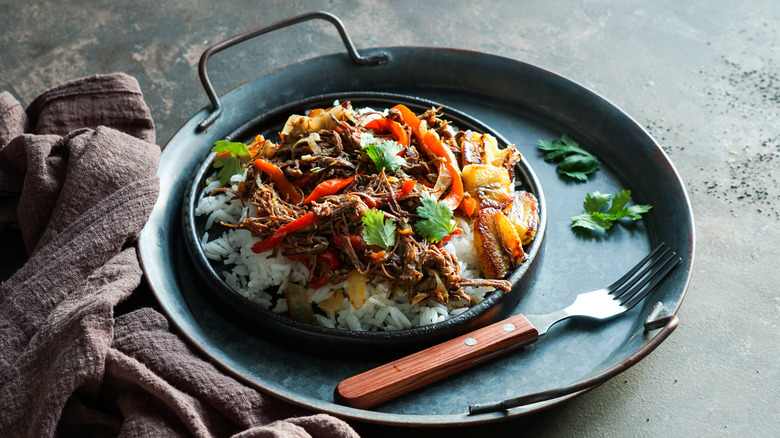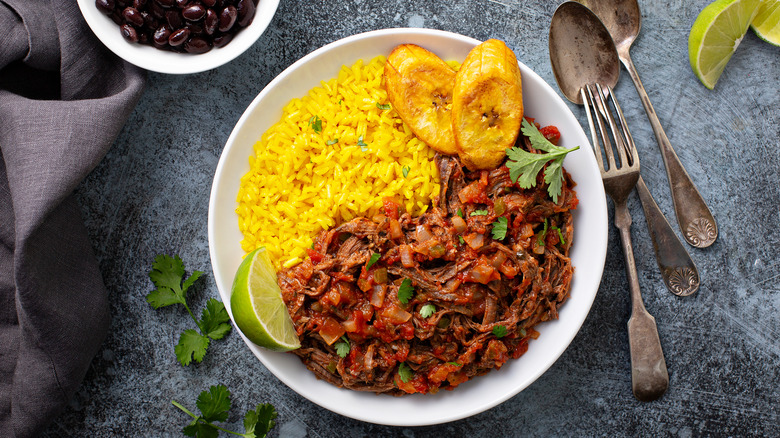What Does The Cuban 'Ropa Vieja' Name Actually Mean?
When we think of Cuba, its amazing cuisine may be one of many aspects we appreciate. Cuban food may be full of bold flavor and intense dishes, but equally so, very heartwarming and comforting recipes. Most of their dishes feature a feast of carbs, starchy root vegetables, spices like cumin and pepper, and various types of meat and seafood: nothing too fancy but all the tastier.
Among delicious Cuban foods are the rich Cuban sandwich, moros y cristianos, beef empanadas, and of course, the one and only ropa vieja.
An authentic ropa vieja recipe consists of slow-cooked beef, tomato sauce, and other vegetables like red peppers and onions. It has tons of garlic, cumin, paprika, oregano, green olives, bay leaves, parsley, and more. You can serve it with rice and beans or fried green plantains known as tostones (via Amigo Foods). Although seen as a simple meat stew and considered a humble dish, ropa vieja carries a lot of tradition and history. There is a unique legend about how it came to be and why it has such an original name.
Ropa vieja is the national dish of Cuba with a unique story
On YouTube, chef and cookbook author Kenji López-Alt explains that ropa vieja means "old clothes" in Spanish because of how the beef shreds once it begins to simmer with the rest of the ingredients. You'll know when the meat is ready by its signature torn, old-fabric look.
Aside from the name, this dish comes with an interesting legend. According to Revolución de Cuba, once upon a time in Spain, a poor man and his family were without food, so he took his old clothes and began to cook them. He prayed while the clothes were in a pot of boiling water, and a miracle transformed it into a meat and vegetable stew so he could end their hunger. While this story may not hold true, the reality is that the recipe is over 500 years old and was created by the Sephardic Jews from Spain. It was specifically made for the day before the Sabbath. Later after making its way through the Americas, this dish arrived in Cuba.
Nowadays, the dish is still celebrated in Cuban households and many Cuban restaurants around the U.S. According to Daring Gourmet, ropa vieja is traditionally made with flank steak because of its shape and cut, which resembles shredded clothing. Despite its many variations and age, ropa vieja will always proudly represent Cuba's national dish.

